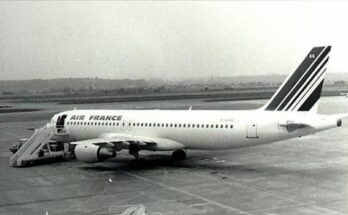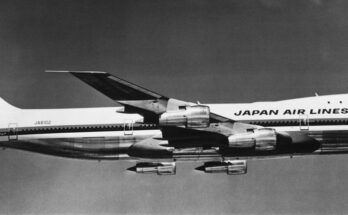
On September 29, 2006, a tragedy unfolded in the skies over Brazil’s remote Amazon rainforest that would forever change the country’s aviation history. Gol Transportes Aéreos Flight 1907, a Boeing 737-800, was flying a routine domestic route from Manaus to Brasília with 154 people onboard when it collided midair with a brand-new Embraer Legacy 600 business jet. While the business jet survived the impact and landed safely, Gol Flight 1907 was not as fortunate. The airliner broke apart and crashed deep into the jungle, killing everyone aboard.
The Flights
Gol Flight 1907 had departed Manaus at 3:35 p.m. local time, cruising at 37,000 feet. Meanwhile, the Legacy jet, operated by ExcelAire and carrying seven people including two American pilots and five passengers, had just been delivered from the Embraer factory and was en route to the United States. It had taken off from São José dos Campos and was supposed to descend to 36,000 feet upon reaching a particular waypoint.
What followed was a tragic sequence of miscommunications, system failures, and human errors that led both aircraft to fly at the same altitude—on a direct collision course—through one of the most remote areas of Brazil.
The Collision
At approximately 4:56 p.m., over the Mato Grosso state in the Amazon, the two aircraft collided midair at cruising speed. The Legacy jet’s winglet clipped the left wing of the 737. The collision ripped off part of the Gol jet’s left wing, causing it to spiral uncontrollably and break apart in the air. Debris scattered across the jungle. There were no survivors.

Miraculously, the Legacy jet, despite suffering damage to its winglet and horizontal stabilizer, remained flyable. The pilots, unaware at first of what had occurred, managed to make an emergency landing at a military base in Cachimbo, saving the lives of all seven people aboard.
The Aftermath and Rescue Effort
The crash triggered an intense search-and-rescue operation in one of the most inaccessible areas of the Amazon. Brazilian Air Force aircraft and ground teams searched for the wreckage for over a day before locating it. The dense forest and the remoteness of the location made recovery operations extremely challenging.
All 154 passengers and crew aboard Gol Flight 1907 perished. It was Brazil’s deadliest aviation disaster at the time and a national tragedy.
Investigation Findings
Investigators from Brazil’s aviation authority (CENIPA) and the U.S. National Transportation Safety Board (NTSB) collaborated on the inquiry. The investigation revealed a series of systemic failures:
The Legacy jet’s transponder, which enables aircraft to be visible on radar and provides data to the Traffic Collision Avoidance System (TCAS), had been inadvertently turned off or malfunctioned, possibly due to a technical error or miscommunication in the cockpit. Brazilian air traffic control cleared the Legacy jet to maintain 37,000 feet all the way to Brasília but failed to correct the error when they should have issued instructions to descend to 36,000 feet. The TCAS systems, which should have alerted both aircraft to the impending danger, failed to activate due to the Legacy’s transponder issue.
Although the American pilots were initially detained and blamed by Brazilian authorities, later assessments clarified that the fault was shared between air traffic control and equipment failures, along with lapses in pilot awareness and coordination.

Impact on Aviation
The Gol Flight 1907 disaster led to major changes in Brazilian airspace management, training protocols, and radar coverage. The incident exposed severe gaps in communication, system monitoring, and international coordination between pilots and controllers.
Public outrage followed, with widespread criticism of Brazil’s aviation infrastructure. Several high-level resignations in the military-run air traffic control system ensued, and systemic reforms were introduced to improve safety standards across the country.
Remembering the Victims
Memorials were held across Brazil to honor the victims. The tragedy remains a stark reminder of the importance of strict adherence to flight procedures, technology reliability, and seamless communication between pilots and controllers. For the families, the pain and unanswered questions endure, but the memory of those lost on Gol Flight 1907 continues to be honored.
The skies over the Amazon, once seen as vast and empty, now carry the weight of a tragedy that reshaped aviation safety forever


